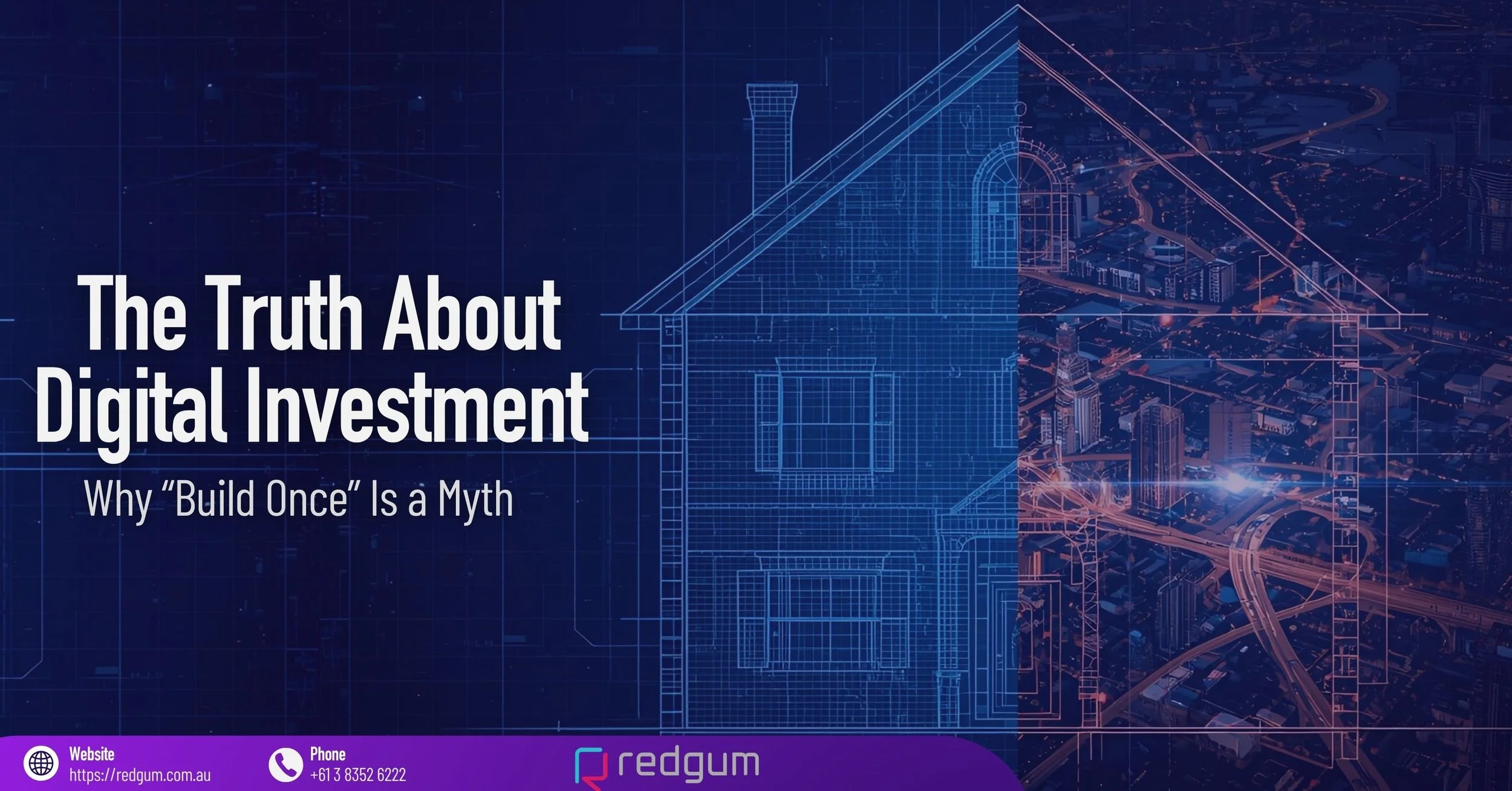Digital Investment - Why “Build Once” Is a Myth
Why do 70% of digital transformation projects fail? Because leaders still think in construction terms when they should be thinking like city planners.
The Construction Mindset Is Killing Your Digital Dreams
You approach digital transformation like building a house. Design phase, construction phase, handover, done. Lock the door and move in.
This thinking destroys digital projects before they start.
Your team creates detailed specifications. They build exactly what you asked for. Six months later, you realize the market has shifted. Your customers want something different. Your competitors have moved ahead.
But you can't just "add a room" to software like you can to a house.
The Real Cost of "Build Once" Thinking
Here's what happens when you treat digital transformation as a construction project:
Budget shock: You planned for a one-time expense, but the platform needs constant updates
Feature creep: Every new business requirement feels like an expensive change order
Competitive lag: While you're "finishing construction," competitors are already iterating
User frustration: Your team gets a system that worked for last year's problems
The construction mindset creates another problem. You demand perfection before launch. Every feature must be complete. Every bug must be fixed. Every scenario must be covered.
Meanwhile, your customers are waiting. Your market is moving. Your opportunity is shrinking.
Companies spend years building the "perfect" platform. When they finally launch, they discover they solved yesterday's problems. The market has moved on.
Think Like a City Planner Instead
Successful digital platforms work like cities, not buildings.
Cities start with basic infrastructure. Roads, water, power. Then they grow organically. New neighborhoods develop based on demand. Old areas get renovated when needs change.
Smart city planners don't try to build everything at once. They create a foundation that can evolve.
Your digital transformation needs the same approach:
Start with core infrastructure: Build the essential systems that everything else connects to
Plan for growth: Design systems that can handle new features without breaking
Budget for continuous improvement: Allocate resources for ongoing development
Embrace iteration: Launch early versions and improve based on real user feedback
The most successful digital platforms launched incomplete. Then they improved based on actual usage data.
The Continuous Investment Reality
Cloud platforms scale brilliantly once they reach critical mass. But they require continuous investment to get there.
Your revenue might grow without adding staff. But your platform needs constant attention. New features. Security updates. Performance improvements. Integration with new systems.
This isn't a bug in digital transformation. It's a feature.
Traditional businesses hit growth ceilings quickly. You need more people to serve more customers. Digital platforms break this lockstep between staff and revenue.
But the trade-off is ongoing technical investment.
Making the Mindset Shift
Change how you think about digital investment:
From project to product: Stop treating your platform as a project with an end date
From perfect to iterative: Launch something useful, then make it better
From construction to cultivation: Grow your platform based on real user needs
From one-time to ongoing: Budget for continuous improvement, not just initial build
The companies that succeed with digital transformation understand this from day one. They plan for evolution, not completion.
Start Planning Your City
Your digital transformation isn't a construction project. It's urban planning.
You're not building a finished product. You're creating a foundation for continuous growth and adaptation.
The question isn't "How much will this cost to build?" The right question is "How much should we invest each year to stay competitive?"

